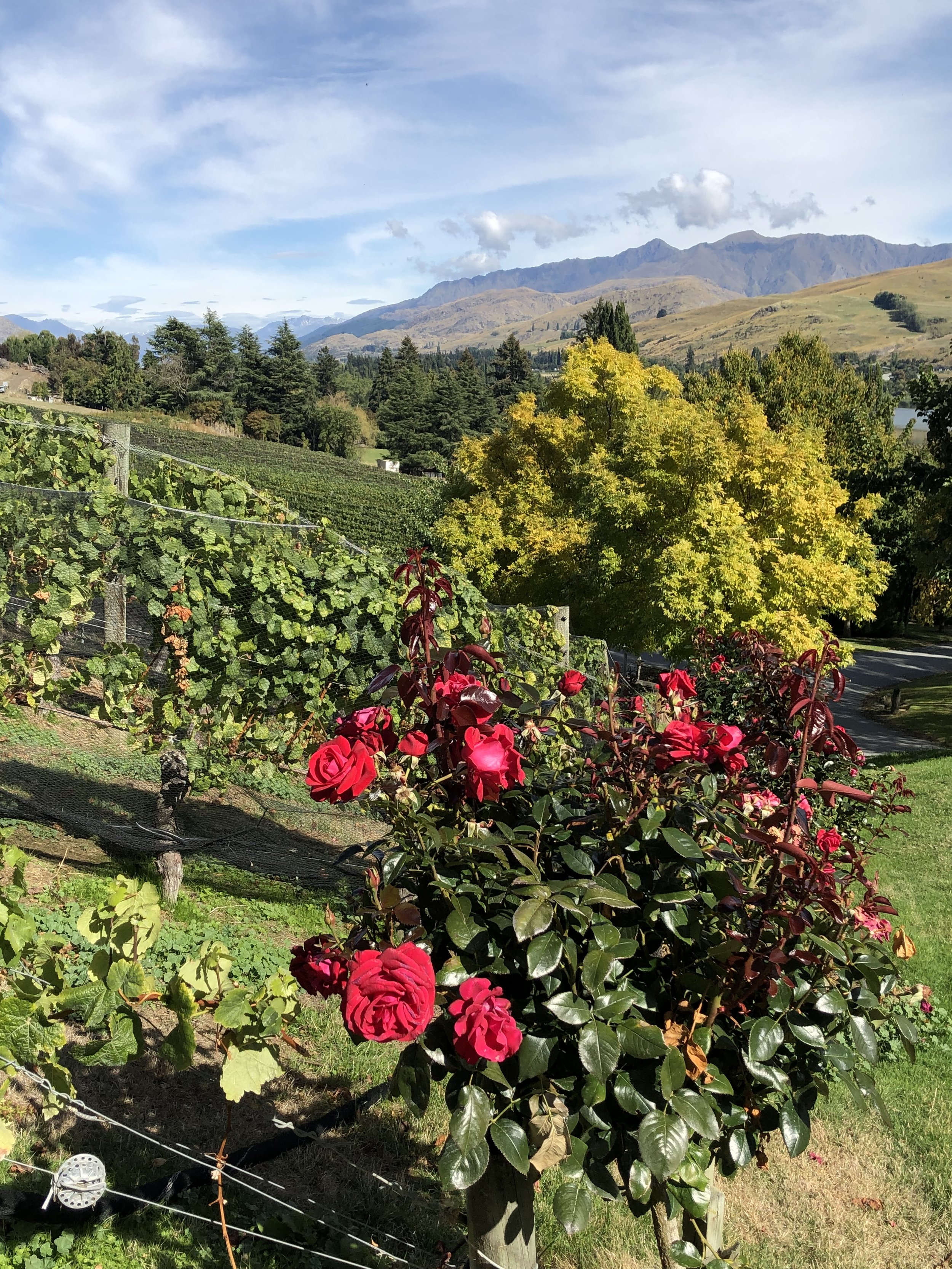Flora of New Zealand
Monthly Theme: Flora of New Zealand
In the New Zealand Māori language, I greet you with “Kia ora tatou,” which means “Hello everyone!” Last month, my daughter and I were fortunate enough to visit the far away land of New Zealand. The country is breathtakingly beautiful and a nature-lovers paradise. Of course, I was intrigued by the flora and thought it would be fun to share some of my photos and new-found knowledge about the plant life we encountered.
The unique native flora of New Zealand has slowly evolved for millions of years. I’ve read that 80% of the trees, ferns, and flowers are found only in New Zealand. No wonder I didn’t recognize so many of the plants!
On day number one, we visited Albert Park Botanical Garden in Auckland. We arrived before the doors opened whereby making us the first visitors in line to enjoy the display of brightly colored flowering plants as well as a fern garden.
In Altitude, NZ we visited a Redwood Forest and ambled across bridges hung from treetop to treetop. On the Tongariro Alpine Crossing trail, we hiked 19.79 kilometers (12.3 miles) up and down desert like mountains and discovered tussock and scrub. We kayaked the Tasman Sea and floated under huge ancient Kauri trees where we learned about widow makers. Large basket-like plants grow high up in the host trees. Early New Zealand lumberjacks called them “widow makers” because if they fell on them while cutting down a tree, it would turn their wives into widows. Surprisingly, we were told they could weight up to 1,000’!
In central Otago, we saw succulents and sedums along the path as we biked a 32.9 kilome5ers (20 miles) rail trail. Besides the flora, we saw fauna in the form of cows and sheep!
New Zealand Daisy (Celmisia semicordata)
We drove for kilometers and kilometers (miles and miles), days and days, carefully on the left side of the road (New Zealanders or Kiwis will tell you they drive on the RIGHT or correct side of the road!) to see as many sites as we could in two-weeks. The roads were in great shape, but narrow, winding, and traversing up and down mountainous terrain so the 110 km/h (68 mph) speed limit seemed excessively fast.
One of the most common trees along the landscape and farmland is the Cabbage tree/tī kōuka. They grow 12 to 20 meters high (39.37’ to 65.62’). Cabbage trees (Cordyline australis) have long narrow leaves and lovely scented flowers in early summer, which later turn into berries for the birds to eat.
We saw total forests destroyed by Cyclone Gabrielle that caused devastation across New Zealand’s North Island this past February. It looked like someone came through and snapped the trees down at the base without the use of a chainsaw.
It was interesting to see what type of plants thrived in areas with volcanic soil. Apparently, some plants like it hot! We saw black sand beaches that glistened in the sun like black diamonds.
Even in the geothermal fields, where the ground is heated up from below and active hot springs and geysers reside, certain vegetation thrives in that environment.
I particularly liked the New Zealand Pohutukawa (Metrosideros excelsa) with its red feathery flowers. It is called the Christmas tree because of the beautiful red flowers that bloom around Christmas time. Unfortunately, invasive and fast-growing pine trees are threatening this native tree. The largest Pohutukawa has a trunk of 11 meters (36’) and there are also rare tree varieties with yellow or pink flowers.
New Zealand Pohutukawa (Metrosideros excelsa)
Vineyards graced the rolling hillsides proudly producing Pinot noIr grapes. Some of the vineyards planted roses at the end of each row to ward off certain insects.
I thought we’d only find Sauvignon Blanc varieties, but Pinot noir has become a New Zealand success story. The first grape vines were planted approximately 140 years ago, but Pinot noir didn’t really attract growers or consumers until a century later. We were told that 80% of the winegrowers grow Pinot noir today. Let’s hope more and more of those bottles get exported to US soon!
Ferns, ferns, and more ferns! New Zealand has an unusually high number of fern species. Ferns are generally found in tropical climates, but New Zealand is considered a temperate country. Besides 200 species of ferns, they even have a Mamaku fern tree! Plus, 40% of these species only grow in New Zealand.
The native Māori people used ferns in their artwork and cultural dances. Since there weren’t many flowering plants, the Māori used bouquets of ferns in their rituals. The leaves of ferns are called fronds. When fronds are young, they are tightly coiled into a spiral shape. In Māori, that spiral shape is called a ‘koru.’
Another notable New Zealand tree and probably best-known is the Kauri (Agathis australis). It is one of the largest and longest-lived tree species in the world. This mighty tree can grow 200’ tall, 16’ in diameter, and can live over 2,000 years. Māori people used Kauri timber for boat and house building. The gum was used as a fire starter and later for varnishes and resin-based products. Sadly, most of the forests were cleared for farmland and timber and now only 1% of these forests remain.
Lastly, I’ll mention the Nikau palms (Rhopalostylis sapida). This is the only native palm in New Zealand. It is an impressive sight in dark forests. They prefer to grow in shady areas and along streams where other palms would not survive. Nikau produce fruit that native Wood Pigeons enjoying munching upon.
Thanks for going on this New Zealand journey with me. I’m sorry I couldn’t positively identify all the plants I took photos of, but I can positively state they were exquisite! New Zealand is truly a diverse landscape with forests, oceans, deserts, mountains, mud pools, geysers, and glaciers. Botanically speaking, the country is rich with flowers, trees, and shrubs. It was so interesting to learn about and discover species that are native to the South Pacific. As the Māori people say, “Ka kite ano,” which means, “Until I see you again!”
New Zealand flax bush (looks like our yucca, but 6’ tall!).







